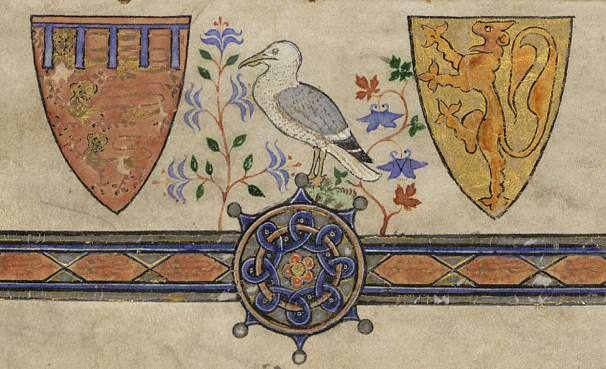
There are some names that just scream royal – George, Edward, Elizabeth, Anne. Kings and queens have a tendency to keep it in the family when it comes to christening their offspring and so a certain quota of names have become associated with royalty. Alphonso isn’t one of them but for over a decade, it was actually the name of England’s heir to the throne and one of the most regal names in the kingdom.
The prince in question was born on November 24 1273 and he was the son of King Edward I of England and his wife, Eleanor of Castile. The couple had been married for almost twenty years when Alfonso was born but many of their children had died very young.
They welcomed their third son in Bayonne in Gascony in south west France. The kingdom of England was heavily tied up in politics on mainland Europe and the Duchy of Gascony was an important part in the powerbase of the Plantagenets, the royal dynasty of Edward I.
Baby Alfonso was actually second in line to the throne at birth. However, even though he had a brother ahead of him who was expected to reign (a young prince called Henry), the name his parents chose for him was still a surprise and seen as unusual for an English royal.
Alfonso’s mother, Queen Eleanor, had turned to her own family for inspiration. Her third son was named after her half brother, Alfonso X of Castle, who had once claimed the Duchy of Gascony as his own but who had given up that ambition when Eleanor married into the English royal family.
There was definitely some diplomacy involved in naming the new royal baby after his uncle as well as family affection.
Within a year, the name took on a brand new significance. In October 1274, Alfonso’s older brother, Henry, died and the little prince became heir to the throne of England at the age of 11 months.
He became known as Earl of Chester, although there is no evidence of the title being formally created for him. Alfonso was raised in his own household, as was usual at the time. However, his parents were far more active abroad than previous English royals with Edward on crusade and Alfonso didn’t spend all that much time with them.
The little prince was still given a majestic education and, as time went on, hopes began to grow that his health was strong enough for him to inherit the throne of England.
His father, King Edward, arranged a marriage for him with Margaret, the daughter of Floris V, Count of Holland, and gifts were prepared for the union. Among them is the Alfonso Psalter, a beautifully illustrated manuscript, which is now in the British Library.
It is a relic of a royal wedding that never happened. After almost eleven years of robust health, Alfonso fell ill and died at Windsor on August 19 1284. He was buried at Westminster Abbey although his tomb can’t now be found.
Just months before his death, his parents had welcomed another son and called him Edward. It was this prince who would grow up to inherit the throne that Alfonso had been heir to for over a decade. However, this Edward would prove disastrous and soon gave way to despotism which ultimately led to him being overthrown in a rebellion led by his own wife, Isabella of France, and her lover, Roger Mortimer.
By then, Alfonso was long forgotten. His name is unique in English royal history and, had he reigned, it might well have become one of the most used royal monikers of all.
Instead, he shares it with a long line of Spanish royals but also has another distinction. The uncle after whom he was named, Alfonso X of Castle, was deeply interested in astronomy and astrology and his work on it was so influential that in the 20th century, parts of the Moon were linked to him. They were named the Alfonsine Craters.
This distant part of the sky, like a prince lost in the distance of time in England’s history, shares an unusual name – Alfonso.

